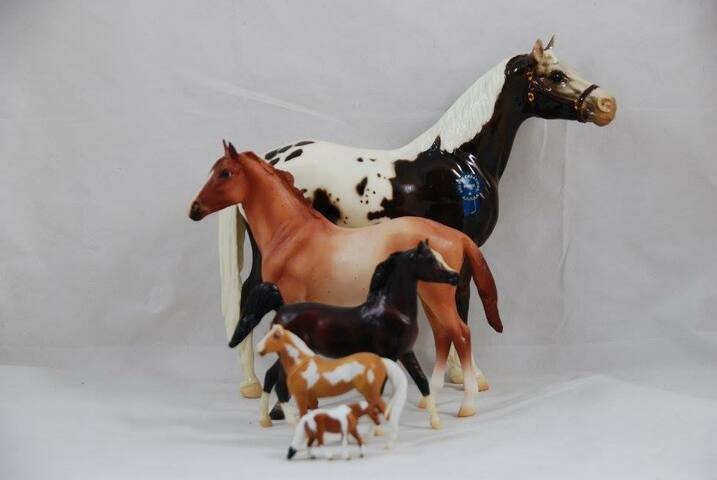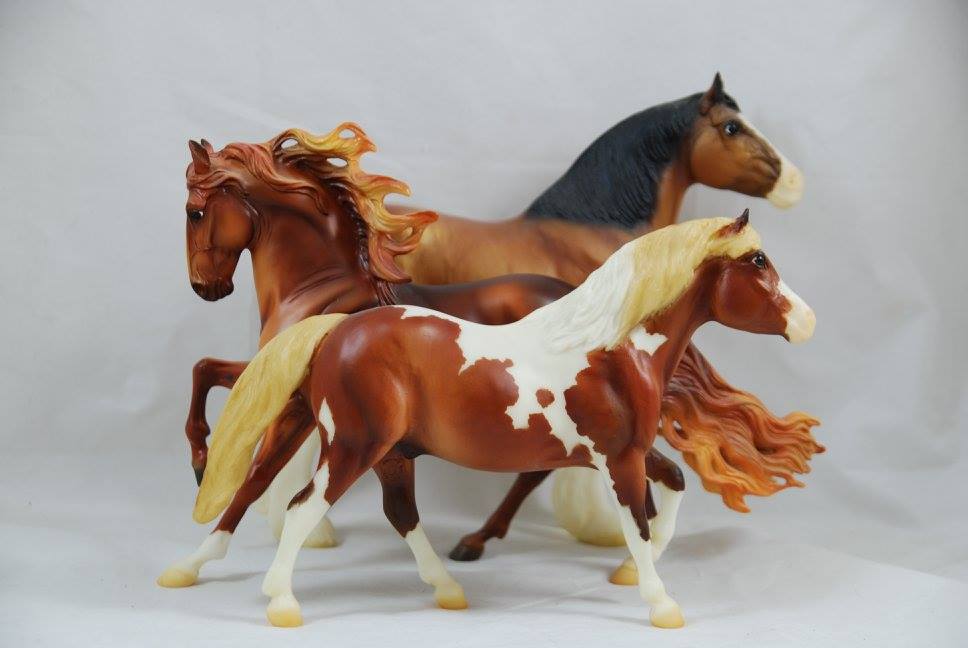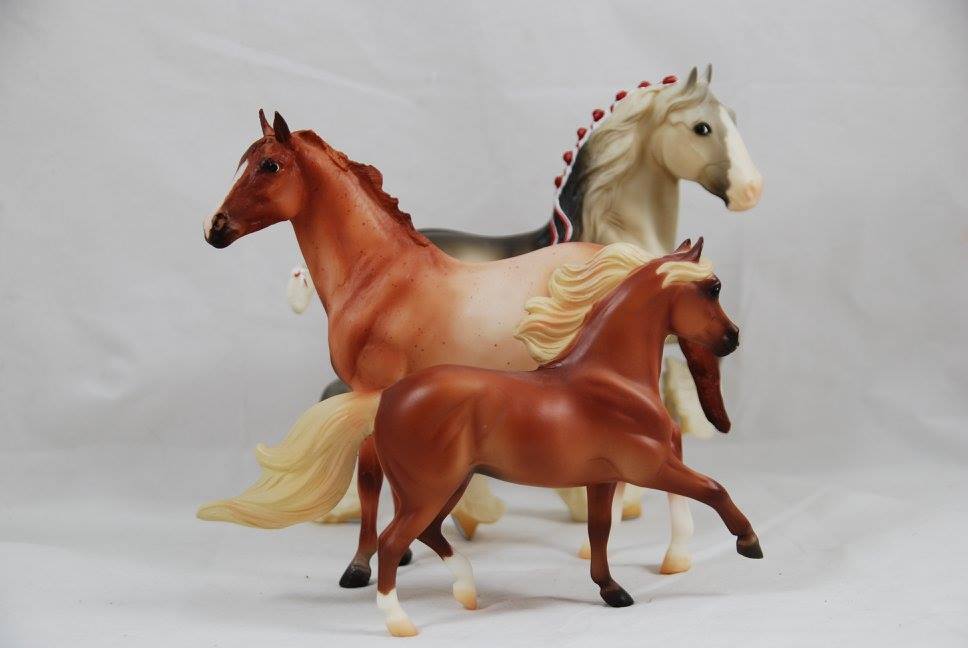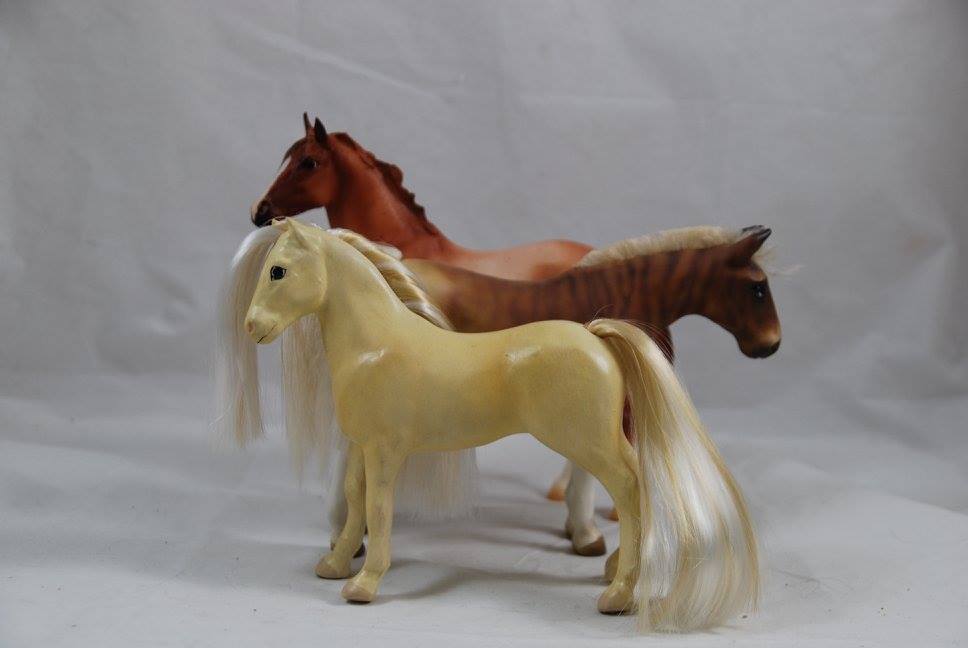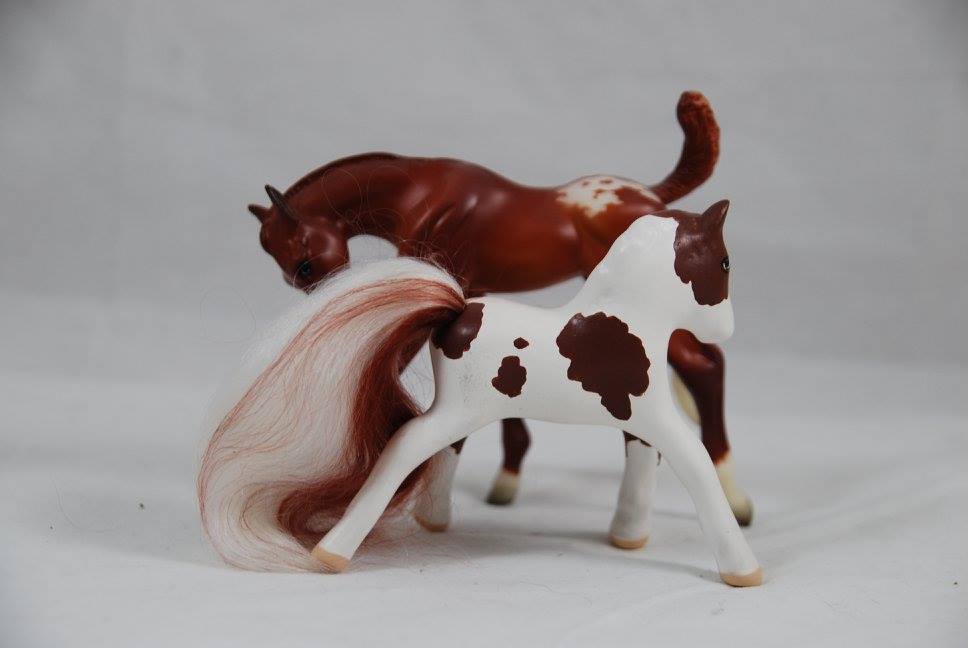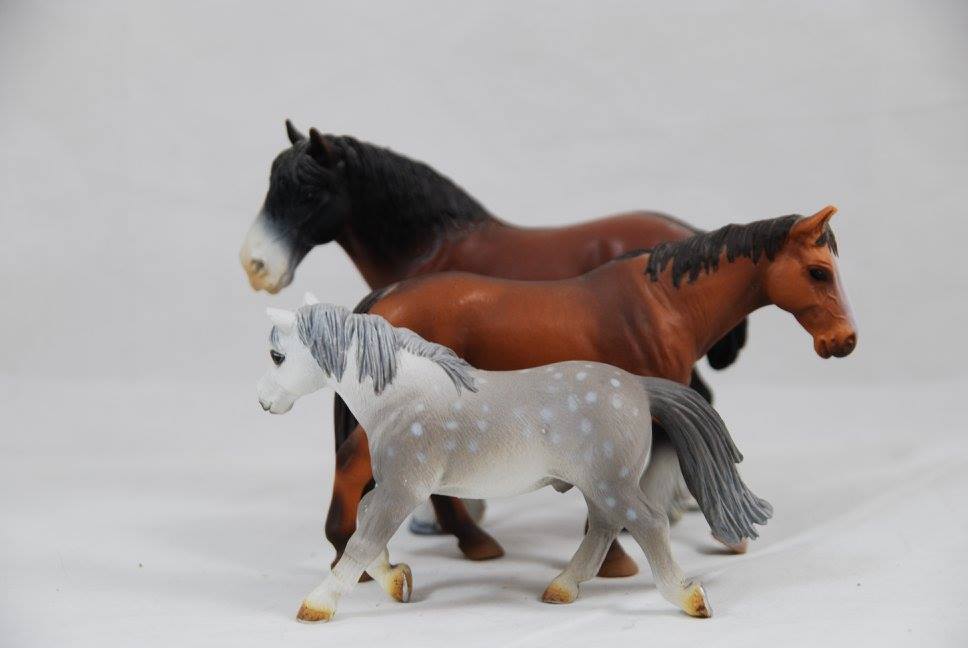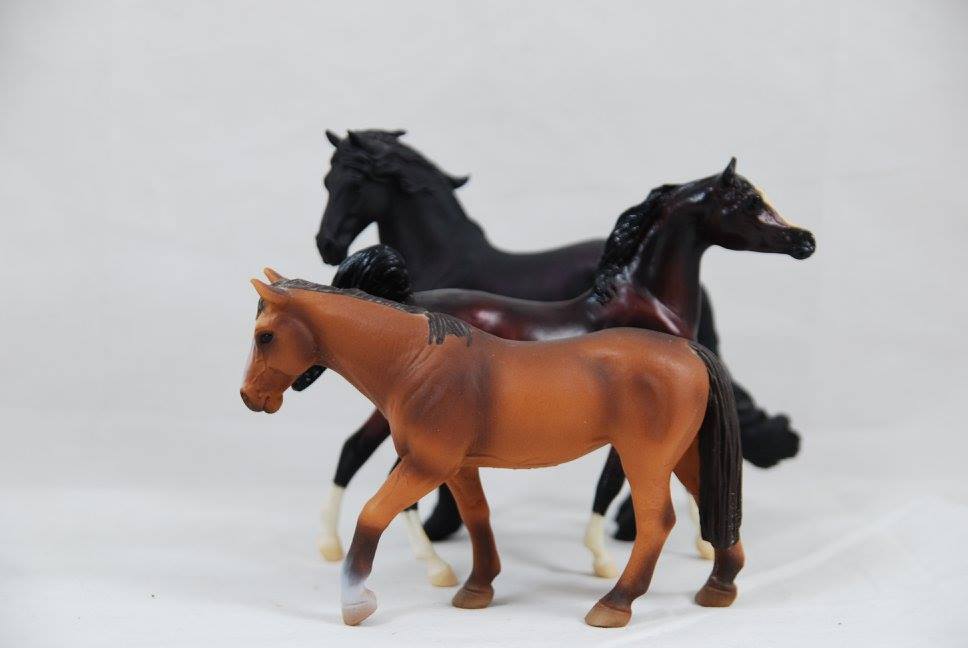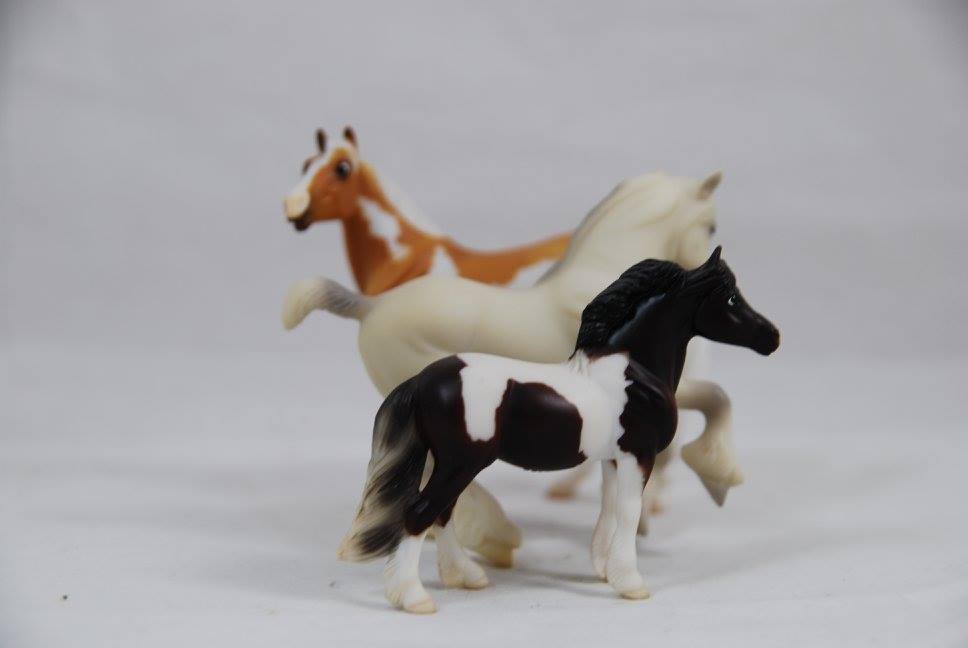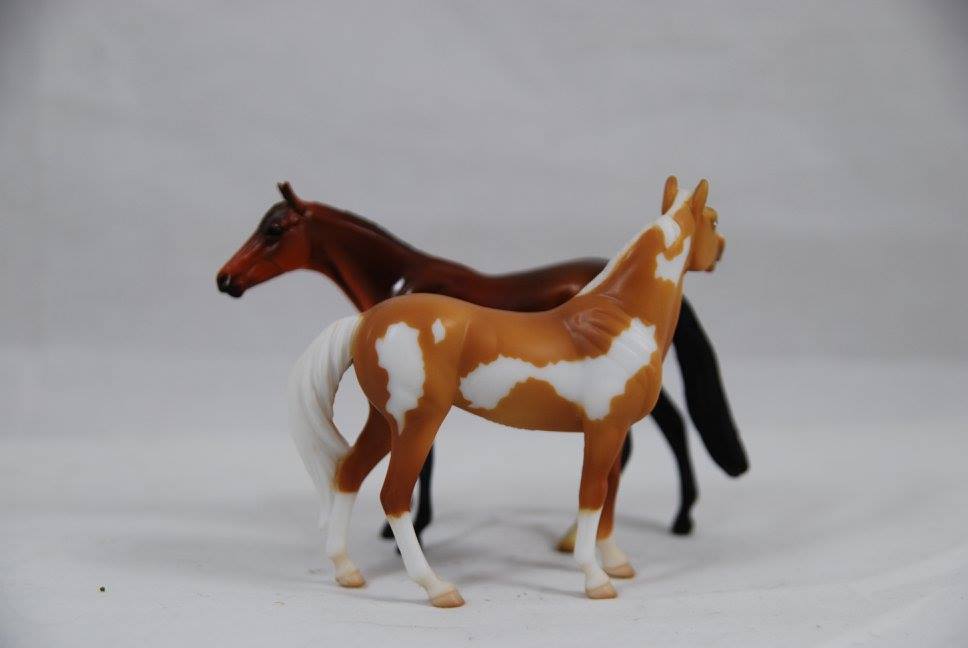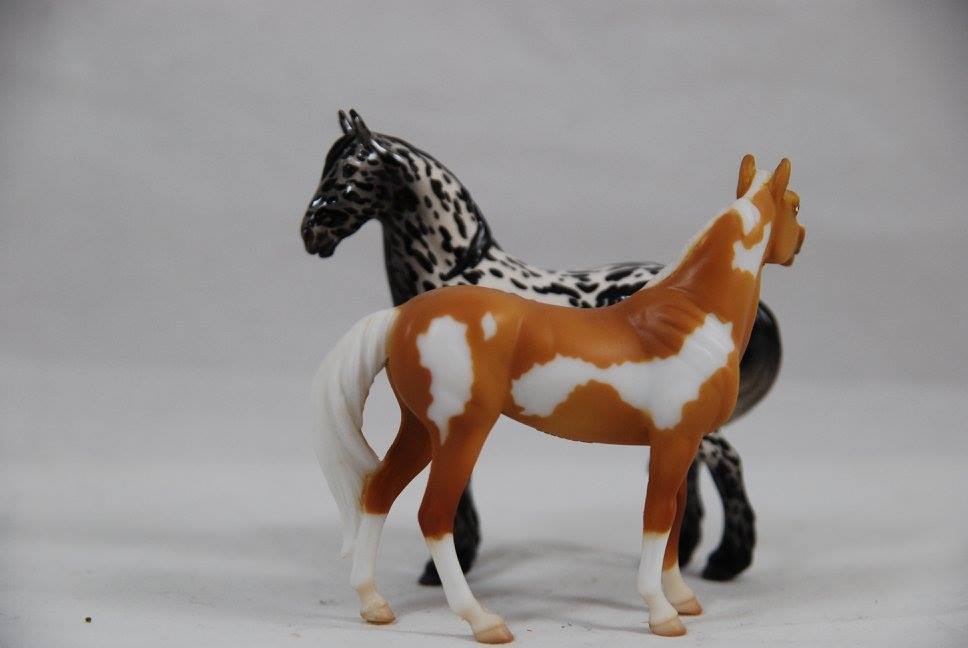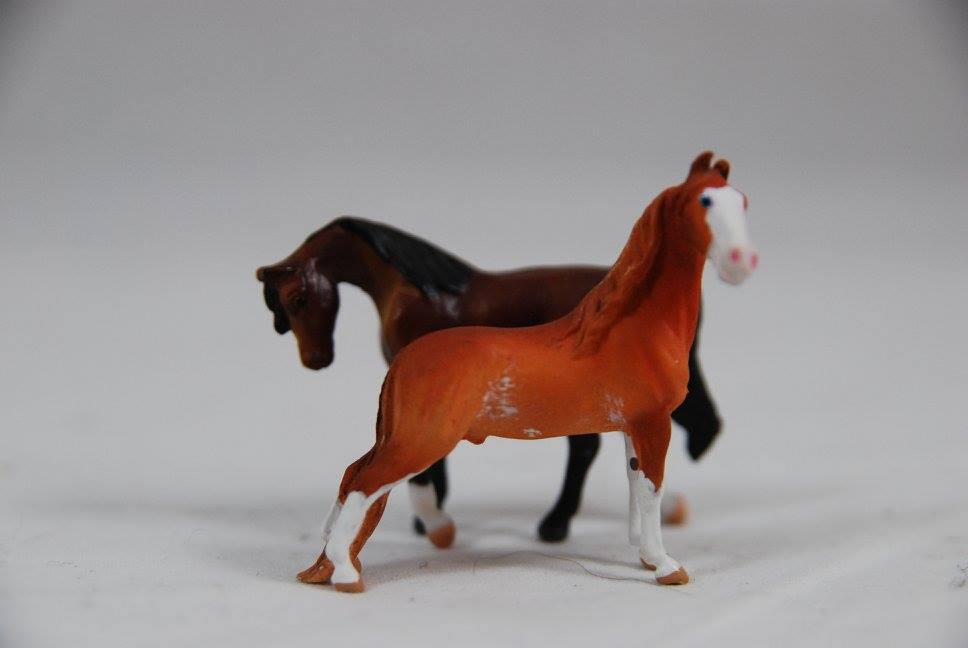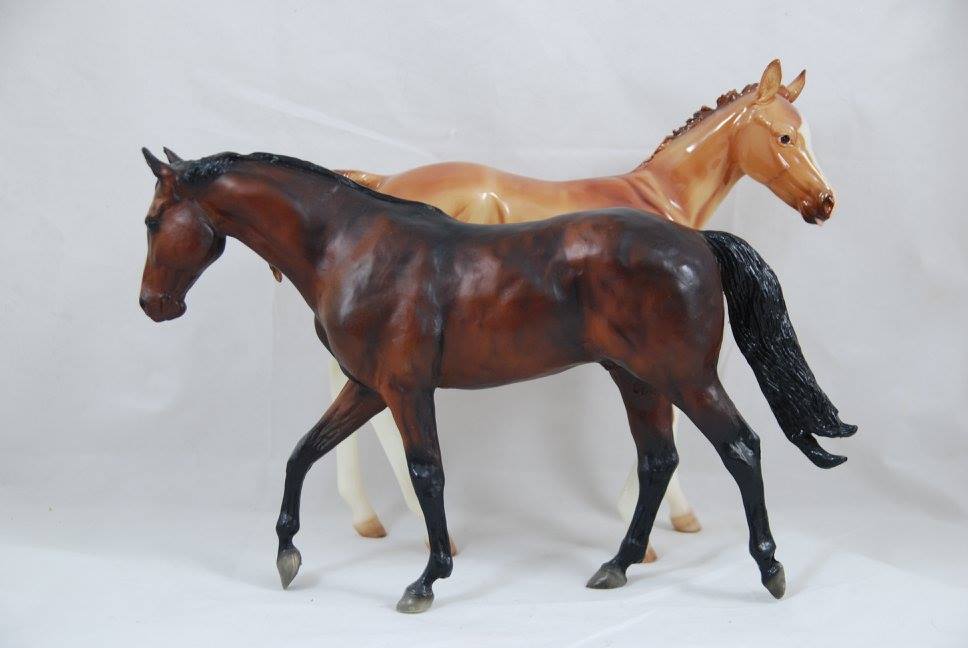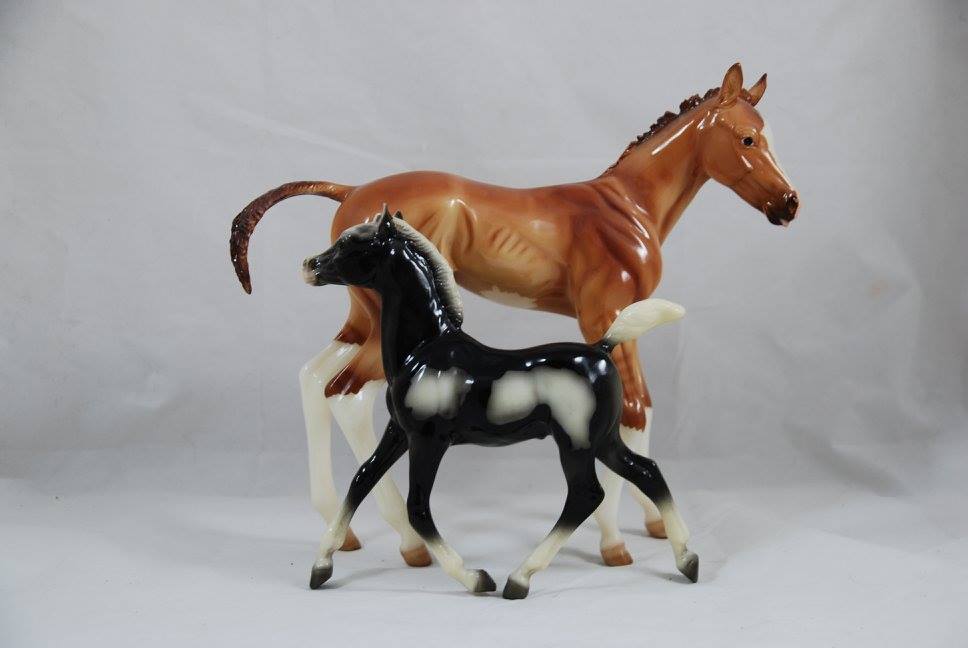This size guide is here to give you a visual guide to the various different model horse sizes and scales.
Before we start it is worth remembering one thing. Scale DOES NOT mean size. Just as there is a difference in height between a Clydesdale and a Shetland there is a difference in height between the Breyer Clydesdale Mare and Shetland moulds.
Before we start it is worth remembering one thing. Scale DOES NOT mean size. Just as there is a difference in height between a Clydesdale and a Shetland there is a difference in height between the Breyer Clydesdale Mare and Shetland moulds.
Scales
Scales are presented as a ratio e.g. 1:9 scale. What this means is that the item is 9x smaller than the item in real life. So if a real horse was 153cm high, the model horse would be 17cm high.
The larger the second number, the smaller the item.
There are five standard model horse scales:
Traditional (1:9 scale)
Classic (1:12 scale)
Paddock Pal or Littlebits (1:24 scale)
Stablemate (1:32 scale)
Miniature (1:64 scale)
This photograph shows a horse in each of these scales all lined up together:
The larger the second number, the smaller the item.
There are five standard model horse scales:
Traditional (1:9 scale)
Classic (1:12 scale)
Paddock Pal or Littlebits (1:24 scale)
Stablemate (1:32 scale)
Miniature (1:64 scale)
This photograph shows a horse in each of these scales all lined up together:
From back to front:
Traditional Scale (Man O' War)
Classic Scale (Duchess)
Paddock Pal Scale (Arabian)
Stablemate Scale (G3 Paint Horse)
Miniature Scale (Jog Trot Quarter Horse Mare)
Traditional Scale (Man O' War)
Classic Scale (Duchess)
Paddock Pal Scale (Arabian)
Stablemate Scale (G3 Paint Horse)
Miniature Scale (Jog Trot Quarter Horse Mare)
Traditional Scale
Traditional scale horses are generally 1:9 scale. These include Breyer Traditionals, Peter Stone Traditionals and other 1:9 scale horses and items.
Model horses are to scale, which means that heavy horses are often larger and ponies much smaller. This picture shows a Heavy Horse, Light Horse and Pony:
Model horses are to scale, which means that heavy horses are often larger and ponies much smaller. This picture shows a Heavy Horse, Light Horse and Pony:
From back to front:
Heavy Horse (Clydesdale Mare)
Light Horse (Andalusian Stallion)
Pony (Haflinger)
Heavy Horse (Clydesdale Mare)
Light Horse (Andalusian Stallion)
Pony (Haflinger)
Classic Scale
Classic scale horses are generally regarded as 1:12 scale, although within this scale there can be a bit of variation. Just as with all other scales the size of the model will vary depending on the breed type. Below is a comparison between a heavy horse, light horse and pony.
From back to front:
Heavy Horse (Shire A)
Light Horse (Duchess)
Pony (Midnight Tango*)
*Midnight Tango is often regarded as a 1:9 scale Miniature Horse as well as being in scale for a 1:12 scale pony.
Other 1:12 scale makes such as Julip horses and Equorums vary in their scale compared to Breyers. Both Julip and 1:12 scale Equorums are slightly smaller than their Breyer counterparts. Below is a comparison between a Breyer, Equorum and Julip:
Heavy Horse (Shire A)
Light Horse (Duchess)
Pony (Midnight Tango*)
*Midnight Tango is often regarded as a 1:9 scale Miniature Horse as well as being in scale for a 1:12 scale pony.
Other 1:12 scale makes such as Julip horses and Equorums vary in their scale compared to Breyers. Both Julip and 1:12 scale Equorums are slightly smaller than their Breyer counterparts. Below is a comparison between a Breyer, Equorum and Julip:
From back to front:
Breyer Classic (Duchess)
Equorum Classic (Mule)
Julip Original (Connemara)
The variation in size applies to foals as well. Below is a comparison between a Breyer Classic and Julip Original foal:
Breyer Classic (Duchess)
Equorum Classic (Mule)
Julip Original (Connemara)
The variation in size applies to foals as well. Below is a comparison between a Breyer Classic and Julip Original foal:
From back to front:
Classic foal (AQH foal)
Julip Original foal (Foal)
Classic foal (AQH foal)
Julip Original foal (Foal)
Paddock Pal
Known as Paddock Pals or Littlebits these models are approximately 1:24 scale. This includes Breyer Paddock Pals and Littlebits as well as Schleich, CollectA (Paddock Pal scale), Bullyland, Papo and Safari. Paddock Pal scale Peter Stone models are known as Pebbles, these are larger than Schleich style models (image pending). Like other scales the size varies depending on the horse type.
Although conventionally referred to as 1:24 scale in reality these models are much closer to 1:18 scale.
Below is a comparison between a Schleich heavy horse, light horse and pony:
Although conventionally referred to as 1:24 scale in reality these models are much closer to 1:18 scale.
Below is a comparison between a Schleich heavy horse, light horse and pony:
From back to front:
Heavy Horse (Shire Gelding)
Light Horse (Holstein Mare)
Pony (Riding Pony Gelding)
Size also varies slightly between makes. Below is a comparison between a CollectA, Breyer and Schleich:
Heavy Horse (Shire Gelding)
Light Horse (Holstein Mare)
Pony (Riding Pony Gelding)
Size also varies slightly between makes. Below is a comparison between a CollectA, Breyer and Schleich:
From back to front:
CollectA (Friesian Stallion)
Breyer (Arabian)
Schleich (Holstein Mare)
CollectA (Friesian Stallion)
Breyer (Arabian)
Schleich (Holstein Mare)
Stablemate
Stablemate horses are approximately 1:32 scale, it is not uncommon to see items sold as 'large Stablemate', particularly resins. These models are slightly larger than Breyer Stablemates. Stablemate scale Peter Stone models are known as Chips. Like other sizes the size of the model will vary depending on the horse type, interestingly as you can see below, this heavy horse is smaller than its light horse counterpart:
From back to front:
Light Horse (G3 Paint Horse)
Heavy Horse (G2 Clydesdale)
Pony (G3 Athletic Pony)
Peter Stone chips are Stablemate scale but are slightly larger than Breyer Stablemates. Below is a comparison between a Chips and a Stablemate:
Light Horse (G3 Paint Horse)
Heavy Horse (G2 Clydesdale)
Pony (G3 Athletic Pony)
Peter Stone chips are Stablemate scale but are slightly larger than Breyer Stablemates. Below is a comparison between a Chips and a Stablemate:
From back to front:
Chips (Thoroughbred)
Stablemate (G3 Paint Horse)
Many Stablemate scale resins and chinas are larger than Breyer Stablemates. Below is a comparison between a china Animal Artistry and a Breyer Stablemate:
Chips (Thoroughbred)
Stablemate (G3 Paint Horse)
Many Stablemate scale resins and chinas are larger than Breyer Stablemates. Below is a comparison between a china Animal Artistry and a Breyer Stablemate:
From back to front:
Animal Artistry (Dauntless)
Stablemate (G3 Paint Horse)
Animal Artistry (Dauntless)
Stablemate (G3 Paint Horse)
Miniature
Miniature scale models are generally around 1:64 scale, although various smaller models are also sold. These models include the Breyer Mini Whinnie range. The size between horse types does not vary hugely in this scale, but the size of resins and pewters can vary from Breyer Mini Whinnies. Below is a comparison between a Maggie Bennett pewter micro and a Breyer Mini Whinnie:
From back to front:
Breyer Mini Whinnie (Walking Arabian Mare)
Maggie Bennett Pewter Micro (Grant)
Breyer Mini Whinnie (Walking Arabian Mare)
Maggie Bennett Pewter Micro (Grant)
Other Scales
You are often going to find items that are in different scales. Just remember, where the scale is given, the larger the second number the smaller the scale.
1:6 Scale Foals
Breyer recently introduced a range of 1:6 scale foals. These are much larger than Breyer Traditionals. Shown is a comparison with a Breyer Traditional horse:
1:6 Scale Foals
Breyer recently introduced a range of 1:6 scale foals. These are much larger than Breyer Traditionals. Shown is a comparison with a Breyer Traditional horse:
From back to front:
1:6 scale (Camilla foal)
1:9 scale (John Henry)
This is a comparison with a Traditional scale foal:
1:6 scale (Camilla foal)
1:9 scale (John Henry)
This is a comparison with a Traditional scale foal:
From back to front:
1:6 scale foal (Camilla foal)
1:9 scale foal (Running foal)
1:6 scale foal (Camilla foal)
1:9 scale foal (Running foal)
If you would like to request a size comparison please email us at [email protected] and we will do our best to accommodate. All requested size comparison can be found in our size comparison gallery.

